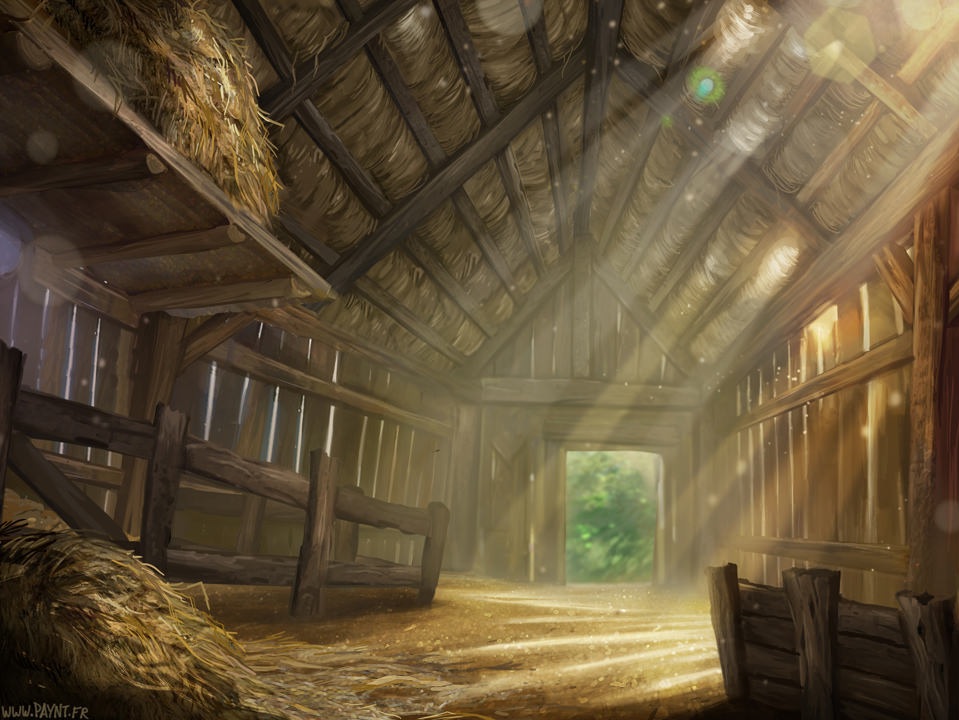Carter Post
Carter posts are stations for carts and wagons that haul freight, serving as units that temporarily store goods for loading to be taken somewhere else. Raw materials and farm produce is collected at isolated carter posts and taken to urban centres, where large carter posts unload these goods for market and distribution. These posts are commonly owned and operated by guild concerns, specifically to collect those goods that are needed for manufacturing finished products, and then for carrying those products to distant customers. Carter posts form an integral link with seagoing trade, as goods are constantly moved from ship to wagon and vice versa.
Because delays and overnight stays are common, carter posts include amenities for teamsters and animal handlers, as well as their animals. Every post includes a bunkhouse sufficient for at least 8 persons, an outdoor paddock, a tether for two oxen, two stalls for sick animals and a galley kitchen. A roofed shelter with minimal walls serves to protect at least two wagons or four carts from weather. Storehouses keep supplies of things that are kept for the day they're needed — either for maintenance or during a crisis.
Personnel
A regular staff supports this collection of buildings. Apart from cook, stablehand and domestic, the carter post includes a farrier, stockkeeper and head overseer, who in turn employs a scribe to keep accounts. The farrier and overseer each live in their own dwelling, counting 1-7 persons each (2d4-1). The remaining persons live collectively in two dwellings, supported by 2-5 additional persons including spouses, siblings and children. Most of these persons can handle themselves well in a fight, but count the possibility that there are 0-3 guards as well, in case things get out of hand. This makes for a total population of 9 to 27 persons.
Larger carter posts may include far more residents, depending on additional services offered. It's best, however, to see these larger posts in terms of collected individual posts, with attached other facilities, for the purpose of determining their importance in a community.
Activity
As wagons and carts roll in, each needing to find a place where they can wait and be addressed, the number of persons moving to and fro can make the post full of activity. The occasional ox that's goaded along, the arrival of a visitor seeking the attention of the overseer, the occasional villager looking for some small service and so on each adds it's part to the scene — and the players too. It may take some time to arrest someone's attention, for directions or to speak with the right person regarding what's wanted.
At other times, however, when no haulers and their carts are around, the tempo of the place might be reduced, with individuals resting themselves, enjoying the lack of work to be done. After all, in another few hours, all could be chaos again.
Bargaining
Carter posts in type-7, type-6 or type-5 hexes are willing to purchase raw materials such as ores, stone, farm produce, raw fibres or cloth, tanned leathers and skins or timber. Amounts paid out can't exceed 40 g.p., according to the amount of coin on hand, and will be granted at 50-80% of the material's value. Characters with bargaining skill can improve this by 10%, or by 20% through pressure bargaining.
In more advanced hexes, these matters are dealt with through other parties. As carter posts are contracted to deliver their existing stores, they cannot sell goods to other persons.
See also,
Hammer (symbol)
Promissory Note
The Adventure
